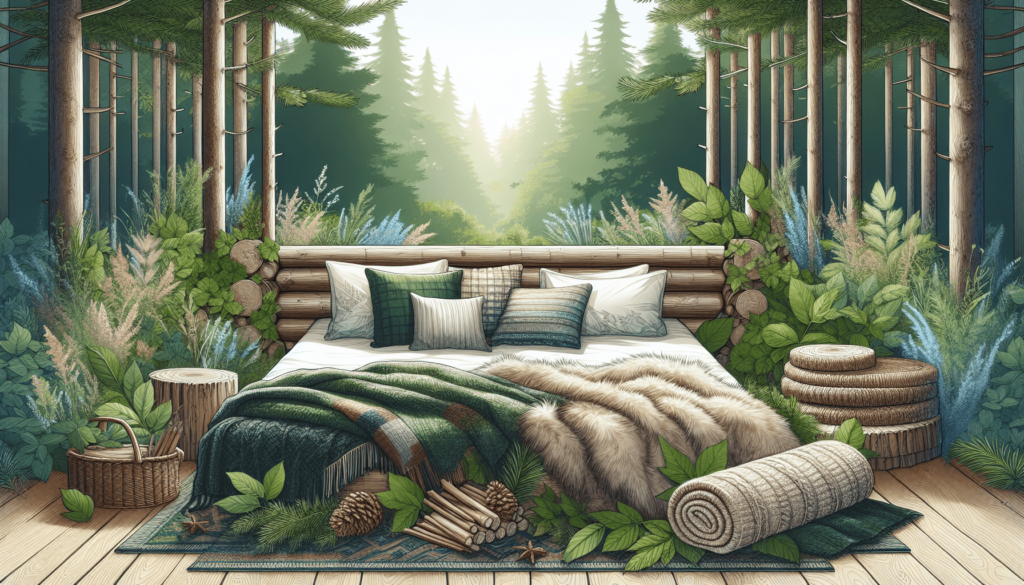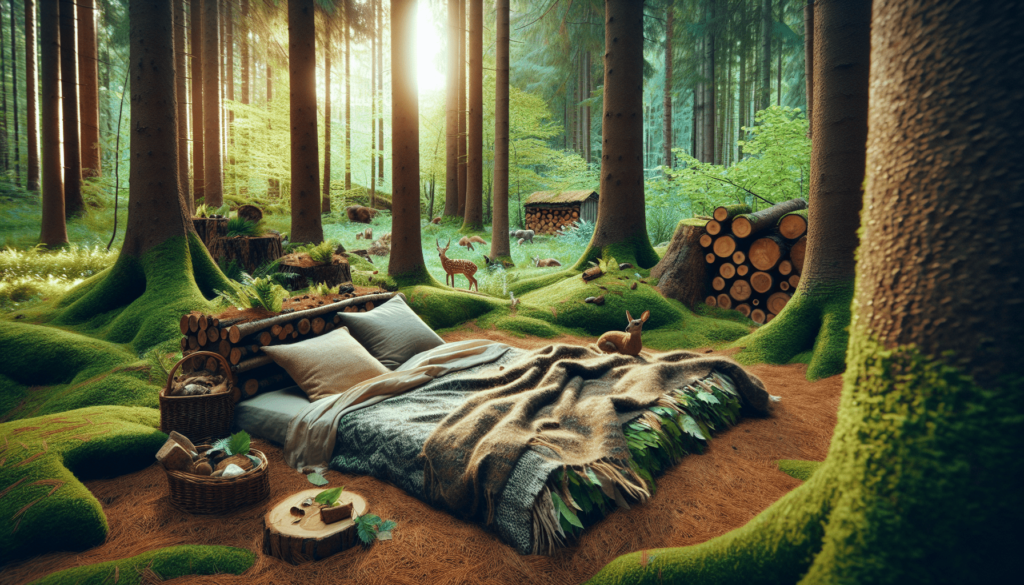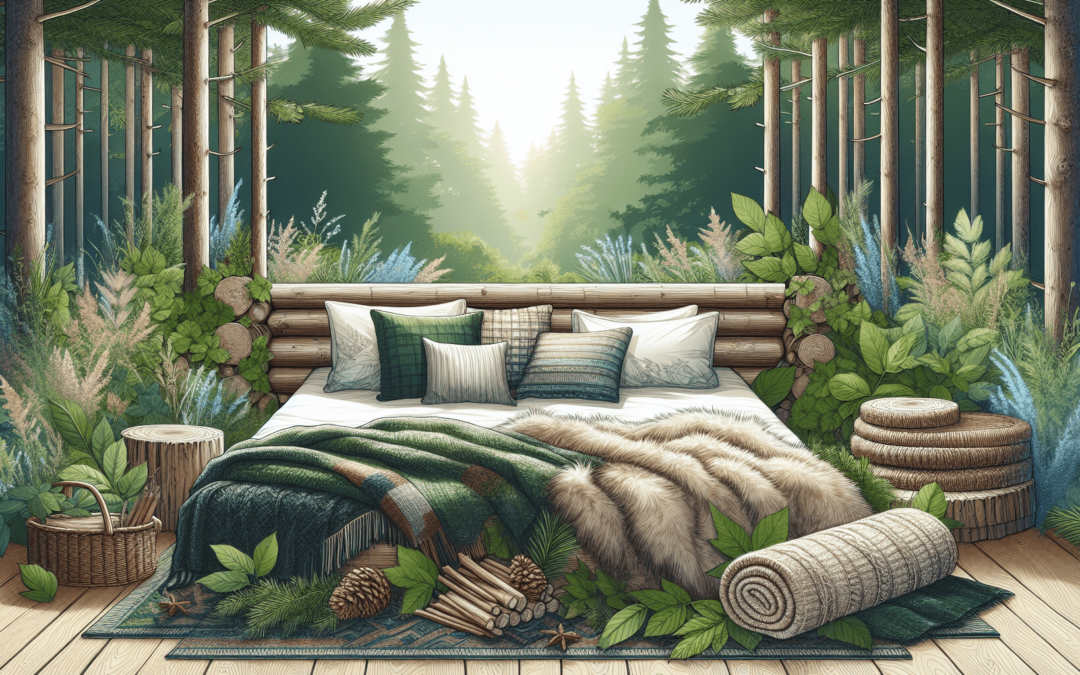Creating a Natural Insulated Bed is easier than you might think, and it’s a wonderful way to enhance both your comfort and environmental footprint. In this article, you’ll discover how to use materials like straw, leaves, and wool to construct an insulated bed that keeps you warm without relying on synthetic materials. Whether you’re an outdoor enthusiast looking for a cozy night under the stars or simply someone who wants a more sustainable home setup, the steps outlined here will guide you through the process with ease and joy. Have you ever thought about how you can keep yourself warm and cozy without relying on synthetic materials? If you’re striving for a more sustainable lifestyle, creating a natural insulated bed can be a fantastic project. Not only does it offer you warmth, but it also ensures that you are surrounded by materials that are biodegradable and free from harmful chemicals. It’s like creating a little piece of nature within your home!
What is a Natural Insulated Bed?
A natural insulated bed is essentially a sleeping arrangement designed to provide warmth and comfort using eco-friendly and sustainable materials. This type of bed incorporates natural fibers and materials that offer insulation without the need for synthetic products. Think wool, cotton, feathers, and even certain kinds of plant-based stuffing. This approach aligns with principles of sustainability, ensuring your sleep space is both comfortable and environmentally responsible.
Benefits of a Natural Insulated Bed
There are numerous benefits to going natural with your bed, and here are just a few:
- Eco-Friendly: Natural materials are often biodegradable and recyclable, reducing waste.
- Healthier Option: They are typically free from chemicals that can cause allergies or skin irritation.
- Comfort: Natural fibers can provide excellent thermal regulation, keeping you warm in winter and cool in summer.
- Durability: Many natural materials, such as wool and feathers, are known for their longevity and durability.
Choosing the Right Materials
When it comes to creating a natural insulated bed, the materials you choose are crucial. It’s important to select items that provide the best insulation and comfort.
Wool
Wool is a favorite for many due to its fantastic insulating properties. It is highly effective at trapping air, which makes it an outstanding natural insulator. Moreover, wool is highly durable and has natural flame-retardant properties.
Cotton
Cotton offers excellent breathability and is less likely to cause allergic reactions, making it another great option. It works well for people who have sensitive skin and is generally easy to clean and maintain.
Feathers and Down
For those looking for a super cozy option, feathers and down are exceedingly warm and comfortable. While they may be on the pricier side, their longevity and comfort can make them a worthwhile investment.
Alternative Plant Fibers
You can also consider materials such as kapok, a natural fiber harvested from the seed pods of the kapok tree. It is lightweight, water-resistant, and provides good insulation.
| Material | Insulation | Durability | Hypoallergenic | Sustainability |
|---|---|---|---|---|
| Wool | Excellent | High | Moderate | High |
| Cotton | Good | Moderate | High | High |
| Feathers | Excellent | High | Low | Moderate |
| Down | Excellent | High | Moderate | Moderate |
| Kapok | Good | Moderate | High | High |

Construction Basics
Layering for Insulation
When constructing your natural insulated bed, layering is key. Start with a sturdy base layer to provide support. A wooden frame works well and can itself be made from sustainably sourced timber.
Mattresses
For the mattress, consider a natural latex option. Natural latex is made from rubber tree sap and can offer excellent support and comfort. It’s also resistant to dust mites and mold. Over this, you could add a wool mattress topper for additional insulation and comfort.
Bedding
Your bedding should also be carefully selected to ensure it contributes to the overall insulation and comfort. Organic cotton or linen sheets are great options. They are breathable and help regulate body temperature.
Blankets and Quilts
Layering blankets and quilts made from natural materials like wool or down can provide the necessary warmth. Patchwork quilts made from natural fibers can add a personal touch while offering excellent insulation.
Maintaining Your Natural Insulated Bed
Maintaining your natural insulated bed is crucial for longevity and comfort. Here are some tips to help you keep it in the best shape:
Regular Cleaning
Regular cleaning of bedding and mattress toppers is essential. Use natural detergents to avoid introducing chemicals. Wool can be aired out to keep it fresh, and cotton bedding can typically be machine-washed.
Rotating the Mattress
Rotating the mattress can help ensure even wear, extending its lifespan. Try to do this every three to six months.
Spot Treatments
Deal with spills and stains promptly using natural cleaners like vinegar and baking soda. This helps maintain the materials’ quality and prevents lasting damage.

Tips and Tricks
Trial and Error
Creating the perfect natural insulated bed might require some experimentation. You may need to try different thicknesses and combinations of materials to find what works best for you.
Seasonal Adjustments
You might want to adjust your bedding with the seasons. Thicker layers can be added in winter, while lighter materials can be used in summer months to keep the bed breathable and cool.
Environmental Impact
Creating a natural insulated bed can significantly reduce your environmental footprint compared to conventional beds filled with synthetic materials.
Waste Reduction
Using biodegradable materials helps ensure that your bed doesn’t contribute to landfill waste.
Sustainable Sourcing
When sourcing materials, look for certifications such as Global Organic Textile Standard (GOTS) or OEKO-TEX, which ensure environmental and social responsibility.
Carbon Footprint
Natural fibers often have a smaller carbon footprint than synthetic options. For instance, wool and cotton require less energy in their processing.
Cost Considerations
Initial Investment
While natural materials can sometimes be more expensive initially, their longevity can make them cost-effective in the long run.
Lifespan
A well-maintained natural insulated bed can last many years, reducing the need for frequent replacements.
Conclusion
Creating a natural insulated bed is not only an investment in your comfort and health but also a step toward a more sustainable lifestyle. By carefully selecting materials, layering effectively, and maintaining your bed, you can create a cozy, eco-friendly haven. Remember, the journey to a more natural and insulated bed might require some adjustments along the way, but the benefits far outweigh the efforts.
So why not take the first step today? Your future self will thank you for the restful, eco-friendly sleep you’ll enjoy for years to come. Happy bed building!

